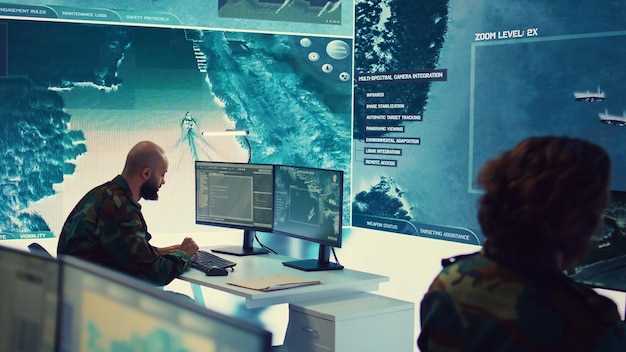Understanding marine electrical systems

Understanding marine electrical systems is essential for every boat owner and enthusiast. These systems not only provide power for navigation and communication but also ensure the overall safety of everyone aboard. Proper wiring and maintenance of these systems can prevent potential hazards associated with electrical failures, which is crucial when you are out on the open water.
Marine electrical systems consist of multiple components, including batteries, switches, and wiring. Each element plays a vital role in delivering reliable power to various devices, from lights to pumps. An awareness of how these components interact allows boat owners to troubleshoot issues effectively and implement necessary upgrades, ultimately enhancing their boating experience.
Moreover, knowing the basics of marine wiring can significantly reduce risks. With a full understanding of electrical loads, circuit design, and safety protocols, boaters can create safer environments while enjoying their recreational activities. This article will delve deeper into the intricacies of marine electrical systems, providing insights that will help you enhance both your knowledge and the safety of your vessel.
Understanding the Components of Marine Electrical Systems

Marine electrical systems are essential for the operation of various boat functions, from navigation to communication and lighting. A solid understanding of the components involved helps ensure safety and efficiency on the water.
1. Wiring: At the core of any marine electrical system is the wiring. It serves as the backbone, connecting all components, including batteries, switches, and devices. Marine-grade wiring is specifically designed to withstand harsh environments, featuring insulation that resists moisture, UV rays, and corrosion. Proper installation and periodic inspections of wiring are crucial to prevent electrical failures.
2. Batteries: Batteries provide the necessary power for a boat’s electrical system. Different types include lead-acid, lithium-ion, and gel batteries, each with its advantages and disadvantages. Understanding the capacity, voltage, and amp-hour ratings of batteries is vital for ensuring that your boat’s electrical needs are met during trips.
3. Electrical Panels: The electrical panel acts as the control center for the boat’s electrical system. It houses circuit breakers, fuses, and switches that allow the operator to manage different systems efficiently. Properly labeled and organized panels enhance safety and ease of use, ensuring quick access to controls in emergencies.
4. Navigation and Communication Equipment: These components include GPS systems, radios, and chart plotters. They rely on electrical power from the boat’s system to function effectively. Understanding their power needs and wiring requirements is essential for seamless operation on the water.
5. Lighting Systems: Adequate lighting is crucial for safe navigation and docking. This includes navigation lights, interior lighting, and underwater lights. Knowing the types of lights used and their power consumption helps in managing energy usage and ensuring all lighting systems function correctly.
6. Alternators and Chargers: Alternators generate electricity to recharge batteries while the engine is running. Chargers are used when the boat is docked to maintain battery levels. Understanding the difference and the requirements for each helps in sustaining power levels efficiently.
In summary, a well-rounded knowledge of the components comprising marine electrical systems– including wiring, batteries, panels, navigation equipment, lighting, and power sources– is fundamental for any boat owner. This knowledge enables better maintenance and troubleshooting, ensuring safe and enjoyable marine experiences.
Safe Practices for Wiring Boats and Managing Electrical Loads

Ensuring safety in wiring boats is crucial for both functionality and protection against potential hazards. When embarking on electrical installations, it is essential to follow stringent safety guidelines. Proper wiring practices not only enhance the longevity of the electrical systems but also mitigate risks of fire or electrical shock.
First and foremost, choose the right materials. Marine-grade wiring and connectors are specifically designed to withstand harsh marine environments, which include moisture, salt, and vibration. Using standard wiring may lead to corrosion and system failure. Always opt for tinned copper wire, which offers better protection against corrosion compared to standard copper.
Next, it is important to plan the wiring layout meticulously. Understand the electrical load requirements of all devices on the boat. This includes lights, navigation equipment, and other essential appliances. Calculate the total amperage and ensure that the wiring used can handle this load. Oversized wiring can lead to unnecessary weight, while undersized wiring poses significant risks.
Additionally, utilize fuses and circuit breakers. These devices serve as vital safety mechanisms in the wiring system. Placing a fuse or circuit breaker close to the power source protects the entire circuit from overload, preventing potential damage to the wiring and onboard equipment. This precaution is fundamental in managing electrical loads effectively.
Proper grounding is another essential aspect. All electrical systems must be grounded correctly to ensure safety and prevent electrical interference. Use a common grounding point to avoid ground loops, which can lead to faulty system performance or electrical hazards.
Finally, routine maintenance and inspections are necessary. Regularly check all electrical connections, wiring integrity, and the condition of devices. Look for signs of wear, corrosion, or loose connections. Keeping a regular maintenance schedule helps identify potential issues before they escalate, ensuring safe and efficient operation.
By adhering to these safe practices during the wiring of boats and managing electrical loads, boat owners can significantly reduce the risk of electrical problems and enhance the overall safety of their vessels.
Common Electrical Issues in Boats and Their Troubleshooting Methods
Boats rely heavily on electrical systems for navigation, communication, and safety functions. Understanding common electrical issues can prevent problems and enhance safety on the water. Below are some frequent electrical issues encountered on boats, along with their troubleshooting methods.
-
Dead Battery
A common issue for boat owners is a dead battery, which can occur due to several reasons, such as leaving lights on or a failed charging system.
- Check battery connections for corrosion or looseness.
- Test the battery voltage using a multimeter.
- If the battery is below 12.4 volts, consider charging or replacing it.
-
Faulty Wiring
Wiring issues can lead to equipment malfunctions and pose safety hazards.
- Inspect wiring for signs of wear, fraying, or melting.
- Verify that all connections are tight and secure.
- Identify and replace any damaged sections of wiring.
-
Blown Fuses
Blown fuses can disrupt critical systems, requiring immediate attention.
- Locate the fuse panel and check for blown fuses.
- Replace the blown fuse with one of the same rating.
- If the new fuse blows immediately, investigate underlying issues.
-
Short Circuits
Short circuits can cause system failures and increase fire risks.
- Inspect wiring and components for damage or improper insulation.
- Use a multimeter to test continuity in suspect circuits.
- Disconnect power sources until the issue is resolved.
-
Electrical System Overload
Overloading can occur when too many devices draw power simultaneously.
- Review the power requirements of all connected devices.
- Distribute the load more evenly across circuits.
- Increase the capacity of the circuit or reduce the load as necessary.
By recognizing these common electrical issues and implementing the outlined troubleshooting methods, boat owners can maintain their vessels’ electrical systems effectively. Regular inspections and proactive maintenance also contribute to achieving optimal safety and functionality while on the water.




